The best phytolamps for indoor flowers and the rules for their use
One of the main conditions for the growth of flowers indoors is a fairly long daylight hours. If the plants do not have enough light, then they will not bloom and develop. Even being on the windows, indoor plants begin to wither, weaken. And their diseases appear from the fact that the daylight hours are short, especially in winter. The organization of supplementary lighting will save indoor flowers. And then they come to the rescue phytolamps.
Plants need to choose phytolamps, and not simple light sources that will heat up, raising the temperature of the air around the flower. In special lamps, the radiation spectrum is such that it does not heat the air, but has a positive effect on the growth of indoor flowers. In this case, the characteristics of plants are taken into account. After all, some of them develop well in diffused light or daylight, while others do well in the shade.
Content:
- The value and benefits of phytolamps
- When and how to use it correctly?
- Types of phytolamps - how to choose the best one?
- Review of the best models
- How to make a phytolamp with your own hands?
The value and benefits of phytolamps
For flowers growing at home, additional lighting with lamps must be carried out in the winter. In summer, there is enough natural lighting. The importance of using lamps for plants is tangible. Together with the light, the plant leaves absorb chlorophyll, a source of energy. When it accumulates in the leaves, the process of photosynthesis occurs.
Light energy is converted into chemical energy. By absorbing carbon dioxide, the plant releases oxygen. Plant cells are protected from destruction due to the action of chlorophyll. There is an acceleration of metabolism in plant cells, and the root system of the flower is strengthened.
Light energy contributes to the production of phytohormones that stimulate the immunity of indoor flowers.
The advantage of using phytolamps in improving illumination is:
- efficiency for the normal development of plants
- no heating
- ecological cleanliness
- durability
- energy saving
Phytolamps are easy and safe to use. They do not contain rays harmful to plants, and are designed to work in rooms with high humidity. The light intensity can be adjusted.
Phytolamps, despite their high cost, have gained popularity and are widely used to illuminate greenhouses, flower shops and hard-to-reach corners of the house where indoor plants are located.
When and how to use it correctly?
In order to understand how to install and turn on phytolamps, it is necessary to calculate the time for organizing the backlight, its intensity. Flowers require different daylight hours:
- Hibernating plants require 8-10 hours of light. These include kalanchoe, zamioculcas.
- Representatives of the Aroid family - spathiphyllum, anthurium, calla lilies - love partial shade. Light of 2.5-3 thousand lux is enough for them.
- Geranium, rosesto develop normally, you need twice as much lighting.
- Orchids and chrysanthemums enough power of four to five thousand lux.
Phytolamps are placed over the plants with a distance of twenty centimeters.If the flowers are different in height, then they raise the pots of low bushes on stands, reaching the same height. Expose to light when the plant is about to bloom. It is believed that female types of indoor cultures need more light. Therefore, when connecting phytolamps, light-loving plants are placed in the middle. For them, the light intensity will be higher than for those standing on the edge.
In order not to destroy the plant and achieve the maximum effect, no more than seventy watts of light should fall on each square meter of area. Together with the sunlight, lamps heal indoor flowers, making them green and strong.
Types of phytolamps - how to choose the best one?
There are several types of phytolamps, differing from each other in light output, degree of heating, and service life. Different types of devices are used as phytolamps:
- Fluorescent lights will not burn plant leaves. They can organize high-quality backlighting in the range from sixty to seventy lumens. The emission spectrum of the lamps is close to the natural solar spectrum. The only drawback of daylight devices is their short period of operation. Choose devices with long lamps to increase the luminous flux.
- Energy saving lamps offer the possibility to choose between warm and cold emission spectra.
- In the orange and red spectrum, light is supplied by sodium lamps. One light bulb will be enough to illuminate plants on one windowsill. Heavier lamps are used to illuminate the winter garden.
- One of the common models of phytolamps is considered to be LED, which emit radiation in the blue and red spectrum. This type of lamp can be used for a long time. The devices are safe and environmentally friendly.
For the correct choice of the lamp, pay attention to the spectrogram of the radiation. The waves in the blue spectrum should reach 450 nm, and in the red spectrum - 650 nm. A shorter or longer length indicates the ineffectiveness of a phyto-device for flower growth. Of all types of phytolamps, LED ones will be the best, although they are expensive compared to others.
Review of the best models
Phytolamp production does not stand still. New and improved models appear. Among the well-known companies involved in the production of phytolamps are Paulmann, Secret Jardin, Philips, LED. Many models are offered by Chinese manufacturers. The light sources they produce are reliable and last a long time.
Among Russian companies, LED lamps are produced by Fitosvet, Focus LLC, Ecolight. The devices of the companies can be equipped with greenhouses, installed in greenhouses. In addition to providing high-quality illumination, such devices create an optimal indoor microclimate.
Flower lamp manufacturers take care of increasing the power of their appliances. So now they produce lamps with a capacity of up to five watts, and complex lamps - up to 10-30. You can buy phytolamps in specialized stores or order them on the websites of manufacturers of lighting devices.
When choosing a lamp model for their green pets, they rely on the number of plants that need high-quality lighting.
Among the popular devices for improving the illumination of plants on racks and windowsills is the Grow Panel. It contains LEDs of the blue and red spectrum in the same quantity. The luminaire is lightweight and reliable, it is hung over flowers, located on an area of ten square meters. The panel has convenient fasteners, plugs into a 220 Volt socket.
To illuminate plants on an area of 0.4 square meters, Economy LED lamps with a power of 2-4 watts are suitable. It is convenient to place them above the pots of indoor plants. Containers with flowers on a windowsill or shelf are illuminated with a linear lamp a meter or more long. A MegaLux device with a power of 14-16 watts will last a long time. Having installed it over plants in winter, they will receive indoor flowers, strong, well-developed.They note the long service life of the lighting device, its safety and reliability.
How to make a phytolamp with your own hands?
At home, you can design a phytolamp of the required power and shape yourself. The assembly of the device begins with the preparation of a stable frame as wide as a window sill or a shelf for flowers. Diodes are attached to the shade by attaching them to an aluminum plate.
The second method of assembly begins with the preparation of two ten-watt blue and red LED arrays, which are placed in the lamp body, attached to a strip of aluminum. Do not forget to bend the strip into an arc to create a reflective effect. A wire is soldered to the diodes, taking into account the polarity, and connected to the power supply.
A cooler is glued to a strip of anodized aluminum along with a power supply unit - this is how the cooling system is prepared. To prevent hot air from accumulating inside the phytolamp body, holes are made in it.
When designing the device, pay attention to the fact that the number of blue and red diodes is the same.
Then the young flower grows better. For adult colors, twice as many blue spectrum diodes are selected. If the colors need diffused light, then the lamp screen should be matte.
A lamp made with your own hands will last a long time if you treat it with care.
More information can be found in the video:



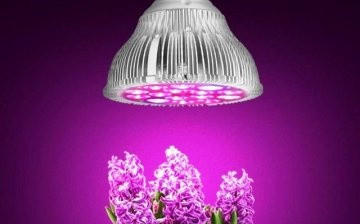
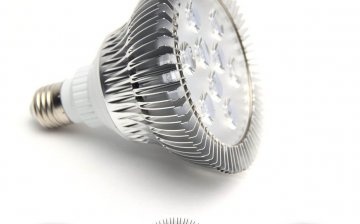
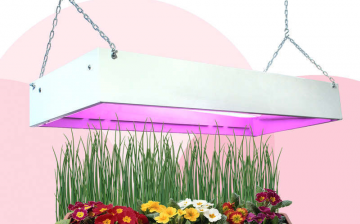
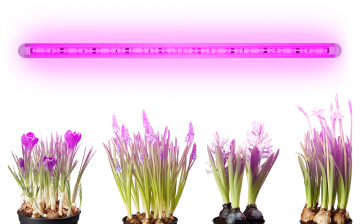

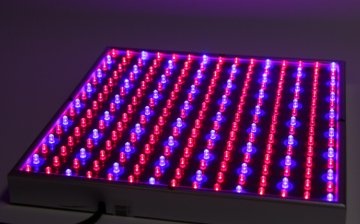






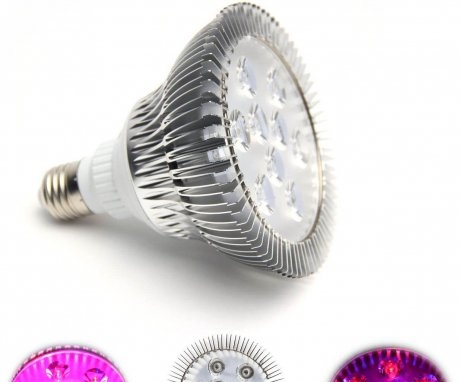

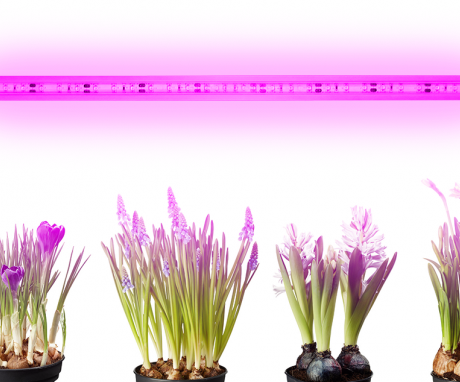
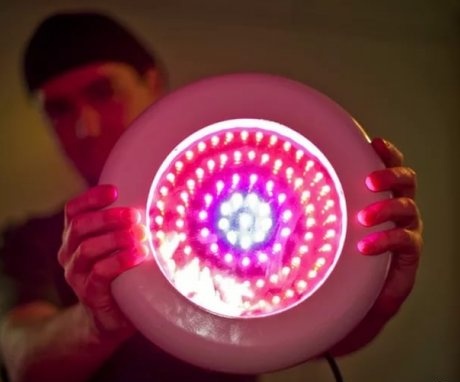
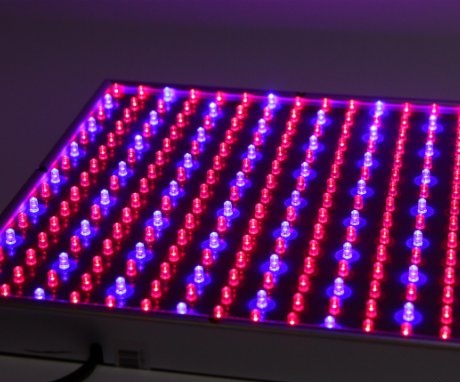
We also use phytolamp. However, mostly not for indoor color, but for seedlings for a greenhouse: tomatoes, peppers, cucumbers. In winter, we also use it for growing greenery on the windowsill.
We made a phytolamp ourselves and hung it over indoor plants. It turned out no worse than the purchased one, at the same time, they independently chose what the size and power would be.
It seems to me that it is easier to buy, because finding materials for such a lamp is not so simple, it can take a lot of time and possibly even money. Homemade things are not nearly cheaper than purchased ones.
This is a very useful advice for us. Indeed, it is true that in order for the light to be evenly distributed, it is enough to raise the undersized flower to the level of the tall one.
And the usefulness of phyto lighting will be most optimal for all "pets" ...